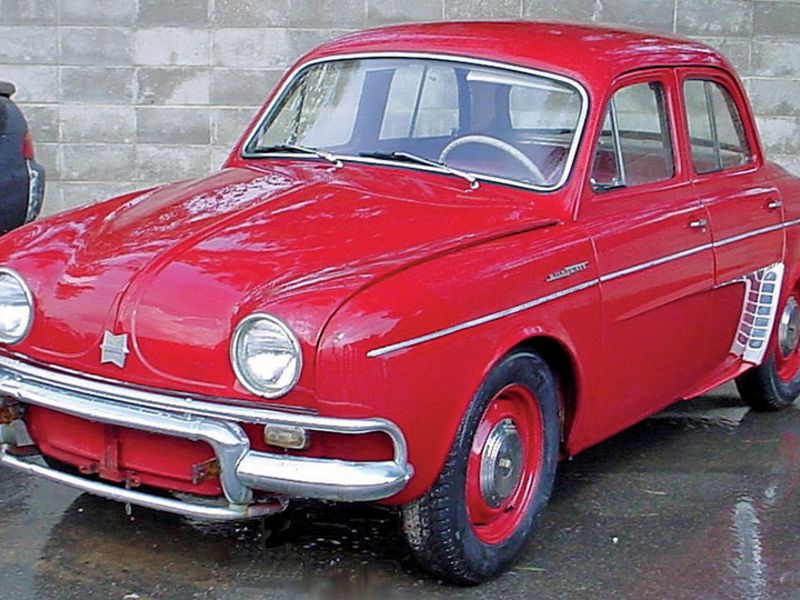
Editor’s note: It’s been 25 years since the GM EV1 rolled into showrooms and launched the electric vehicle in the modern era. This article is part of a special report Automotive News will publish on Monday.
If you really want to know who killed the electric car, we’ll tell you. It’s Charles Kettering, and he did it with — surprisingly — an electric motor.
At the dawn of the automotive era, three energy sources were battling for supremacy to drive the automobile: gasoline, electricity and steam. Each had major drawbacks.
Gasoline was expensive, hard to find and dangerous to handle. Worse, cars with gasoline engines had to be hand-cranked, a risky, potentially bone-breaking activity.
Electric cars use batteries to store energy, which is fed to a motor that drives the wheels. But the lead-acid batteries used in early electric vehicles were heavy; driving range was extremely limited — maybe 50 miles max — the vehicles were extremely slow; and charging times were long.
Steam-powered vehicles — which outsold gasoline-powered cars from 1899 to 1905 — were slow to fire up and get rolling, and they took the skills of an engineer to operate the levers, pumps, handles and pressure valves.
In 1912, a device invented by Kettering, one of the founders of Dayton Engineering Laboratories Co. — Delco — appeared on a Cadillac. Instead of an iron hand crank, a small, high-torque electric motor, operated by a twist of a key, turned the crankshaft and started the engine. By the mid-1920s, the electric self-starter was standard on nearly every automobile. Steam- and battery-powered vehicles faded away.
The electric motor that drove those early EVs, though, did not vanish from automobiles. Essentially, it got a demotion. While the internal combustion engine became the preferred way to drive the wheels, small motors eventually would be used to operate windshield wipers, heater fans and radiator fans; raise and lower windows; move seats back and forth and up and down; and power dozens of other features.
After World War II, when battery technology improved, automakers again began tinkering with returning the electric motor to its original mission: driving the wheels.
Now, after a century of fits and starts, the era of the electric car appears to have finally arrived.
It’s been a long road back. Here’s a look at some historic EVs from major automakers and others built in the post-World War II era.
1959 Henney Kilowatt
Used a Renault Dauphine body and an electric drivetrain powered by lead-acid batteries
Top speed: 60 mph
Range: About 60 miles
Number built: 47
Notable: The electric motor was made by vacuum cleaner manufacturer Eureka.
1966 General Motors Electrovair II
A Chevrolet Corvair powered by silver-zinc batteries
Top speed: 80 mph
Range: 40-80 miles
Number built: 1
Notable: The battery pack cost $160,000 in 1966.
1966 GM Electrovan
World’s first fuel cell vehicle, made from a GMC Handi-Van
Top speed: 70 mph
Range: 150 miles
Number built: 1
Notable: The vehicle ran under its own power only once.
1967 Ford Comuta
A twin-motor microcar with a fiberglass body, built by Ford of England
Top speed: 40 mph
Range: 25-40 miles
Number built: 4
Notable: The Comuta was even smaller than a Smart ForTwo.
1978 GE-100, made by General Electric
This one-off test vehicle used 18 advanced 6-volt lead-acid batteries.
Top speed: 60 mph
Range: 75 miles
Number built: 1
Notable: Starting next month, the GE-100 will be on display at the Saratoga Automobile Museum in New York.
1990 GM Impact
The first modern vehicle from a major automaker designed from the wheels up as an electric car
Top speed: 100 mph
Range: About 70 miles
Number built: 12
Notable: The Impact concept was the precursor to the GM EV1.
1992 Ford EcoStar
Used sodium-sulfur batteries installed in an English Ford Escort van. Ford lent the vans to companies for fleet testing.
Top speed: 75 mph
Range: 100 miles
Number built: 100
Notable: Each EcoStar cost Ford around $250,000 to manufacture.
1997 Honda EV Plus
Designed from the wheels up to be an electric car. Honda was the first automaker to use nickel-metal hydride batteries.
Top speed: 80 mph
Range: 81 miles
Number built: 325
Notable: The first Honda FCX fuel cell vehicles used repurposed EV Plus chassis.
1997 Chevrolet S-10 Electric
The compact pickup used the EV1’s basic powertrain and electronics to drive the front wheels.
Top speed: 70 mph
Range: 88 miles (with nickel-metal hydride batteries in later versions)
Number built: 492
Notable: GM was trying to make a business of electric vehicles and used as many EV1 parts in the S-10 Electric as possible.
1997 Toyota RAV4 EV
The compact crossover was converted from a gasoline RAV4 and used nickel-metal hydride batteries.
Top speed: 85 mph
Range: 95 miles
Number built: 1,484
Notable: Toyota partnered with Tesla on the second-generation RAV4 EV.

